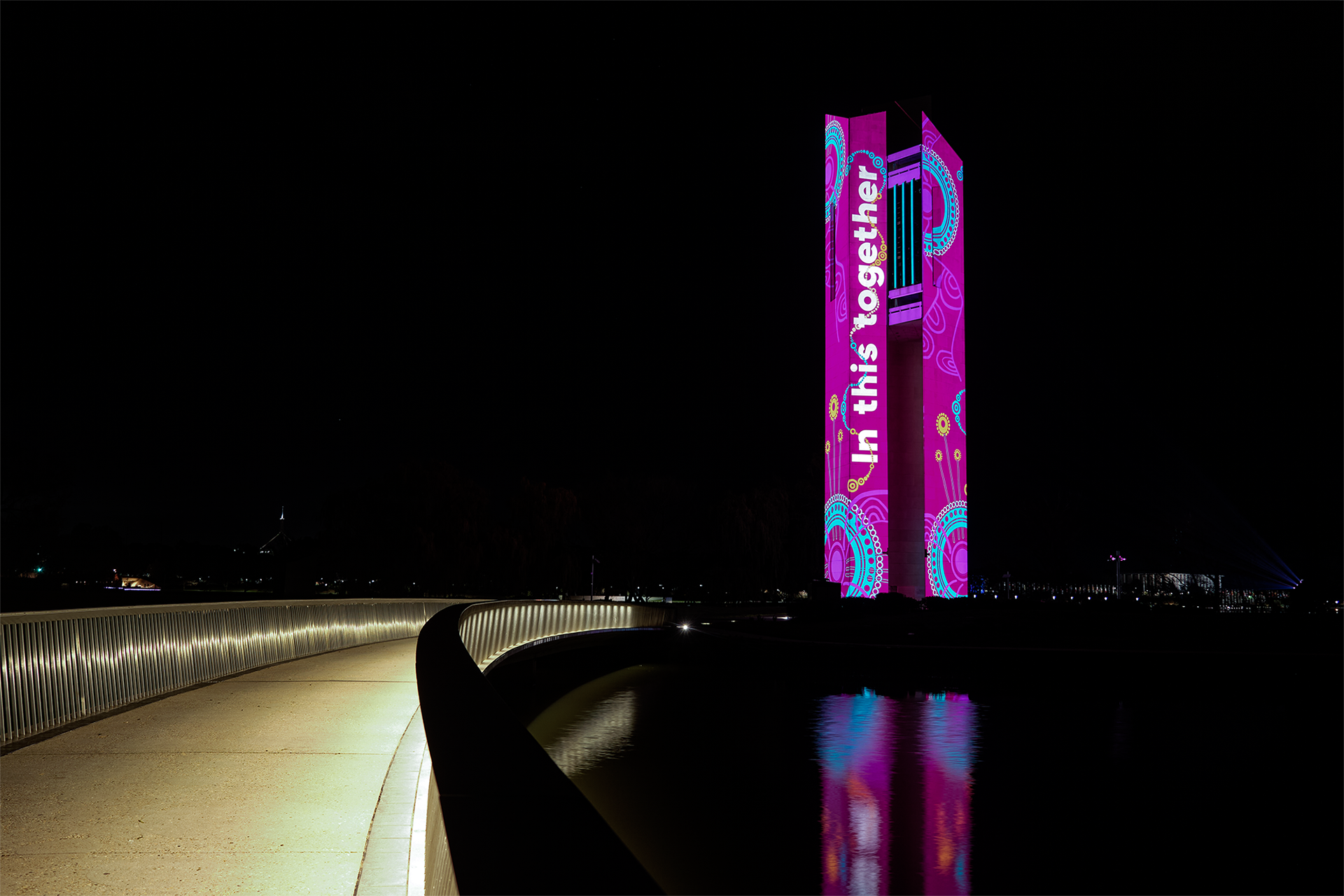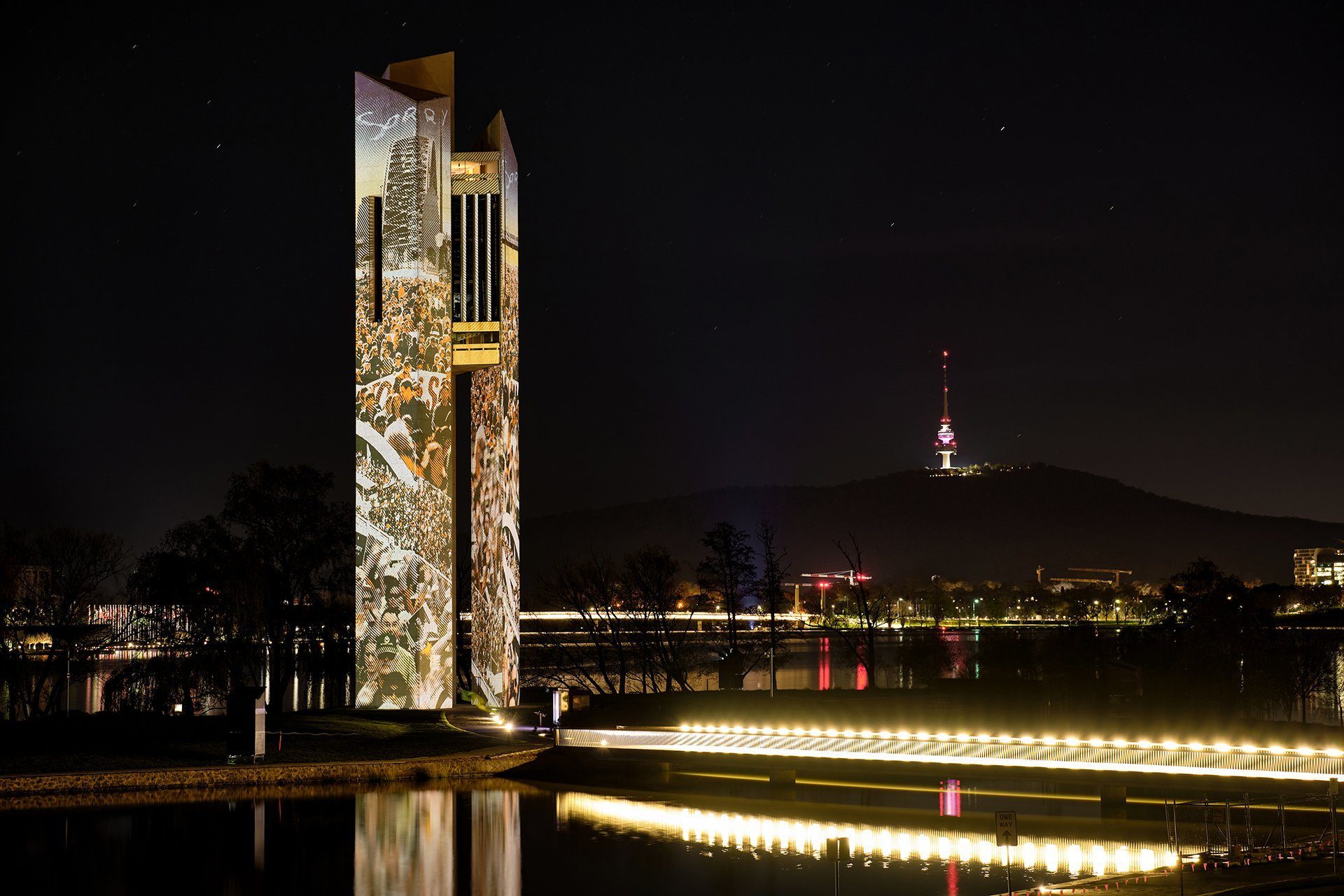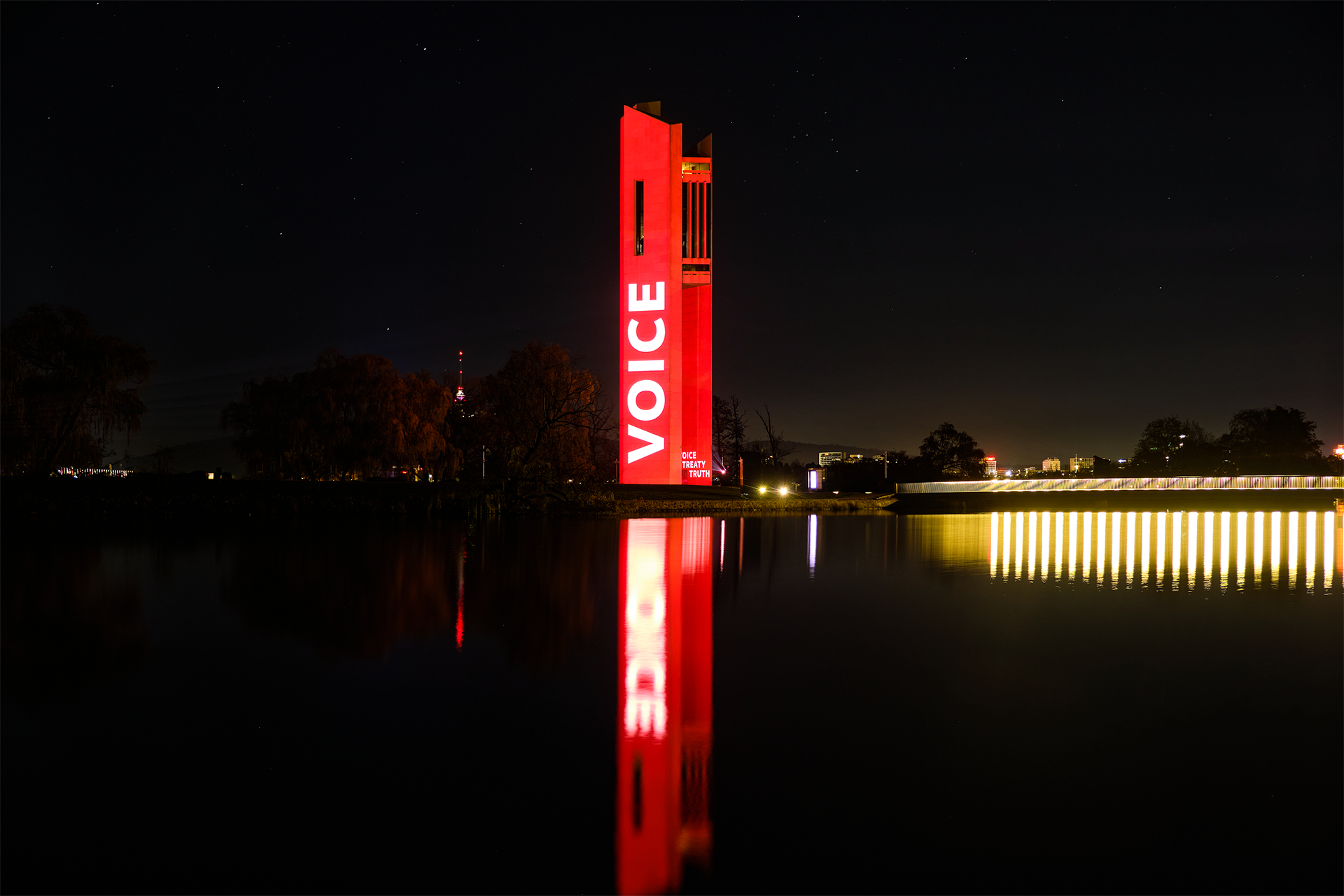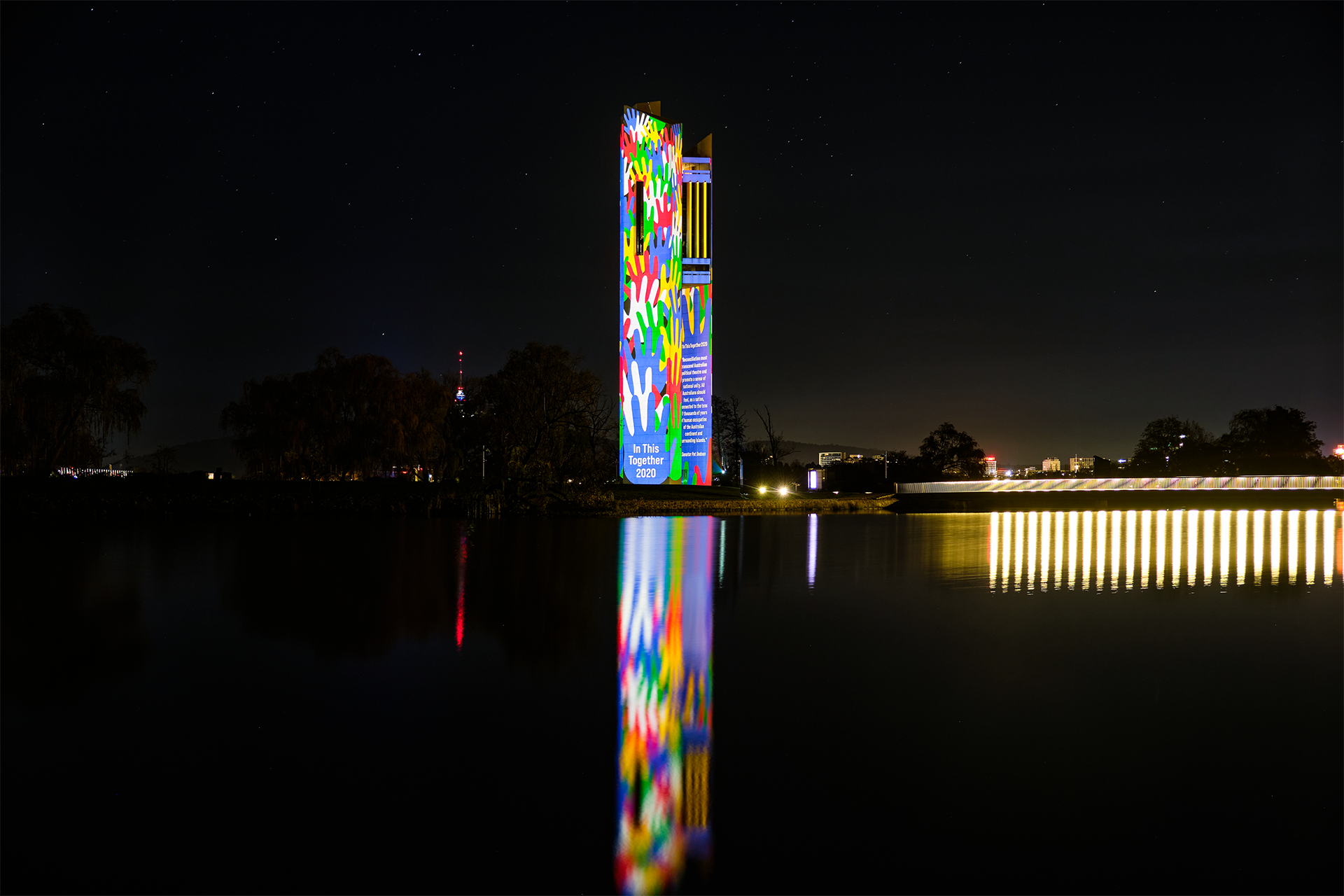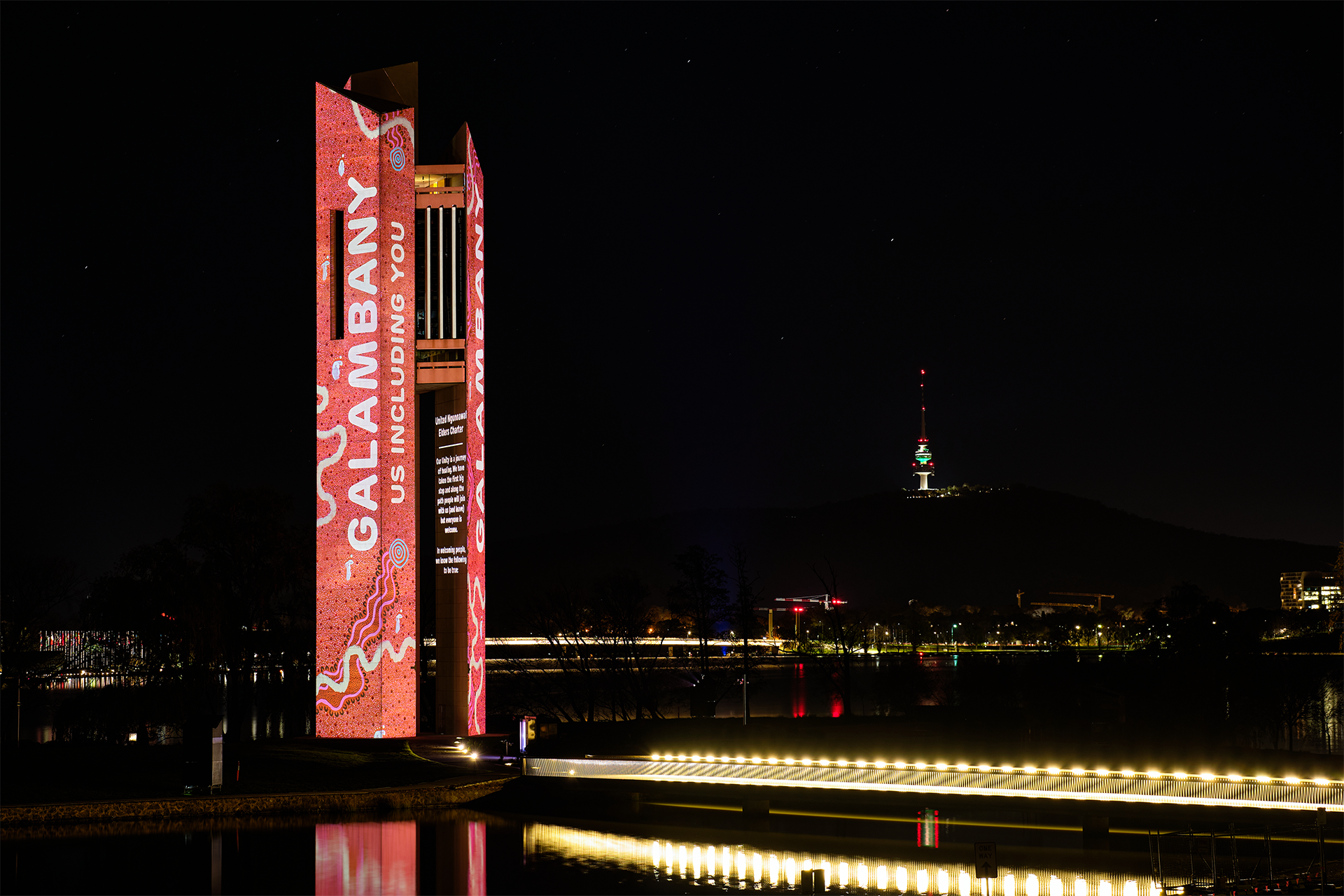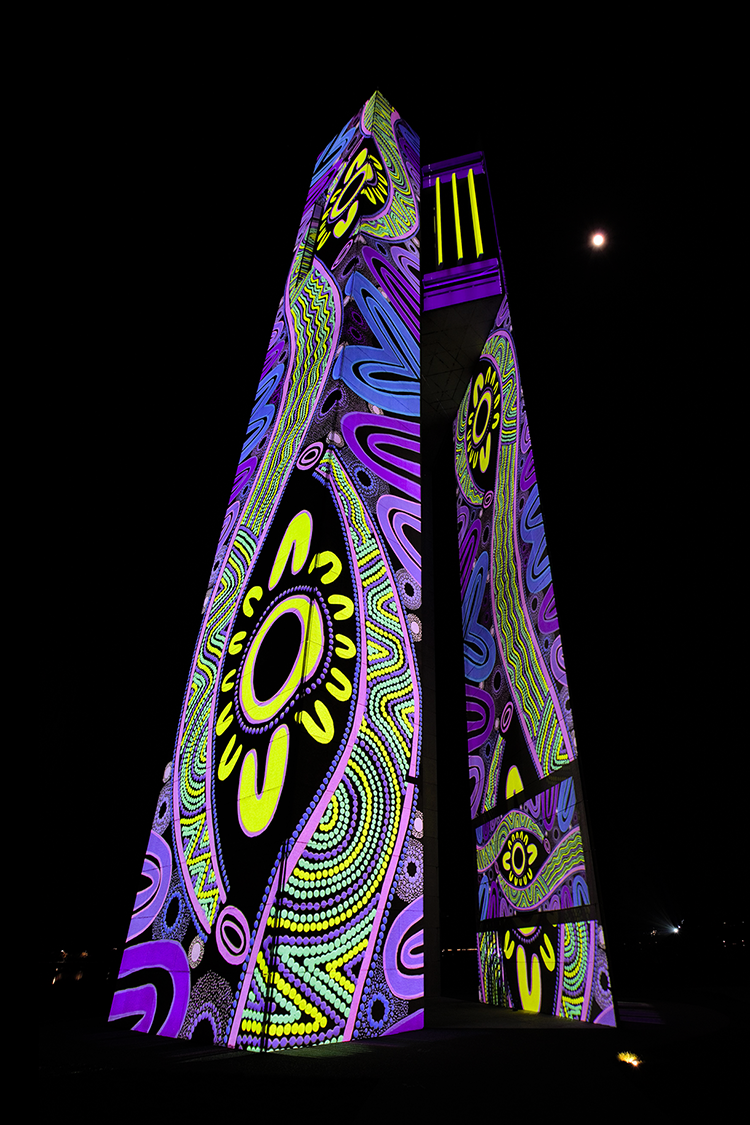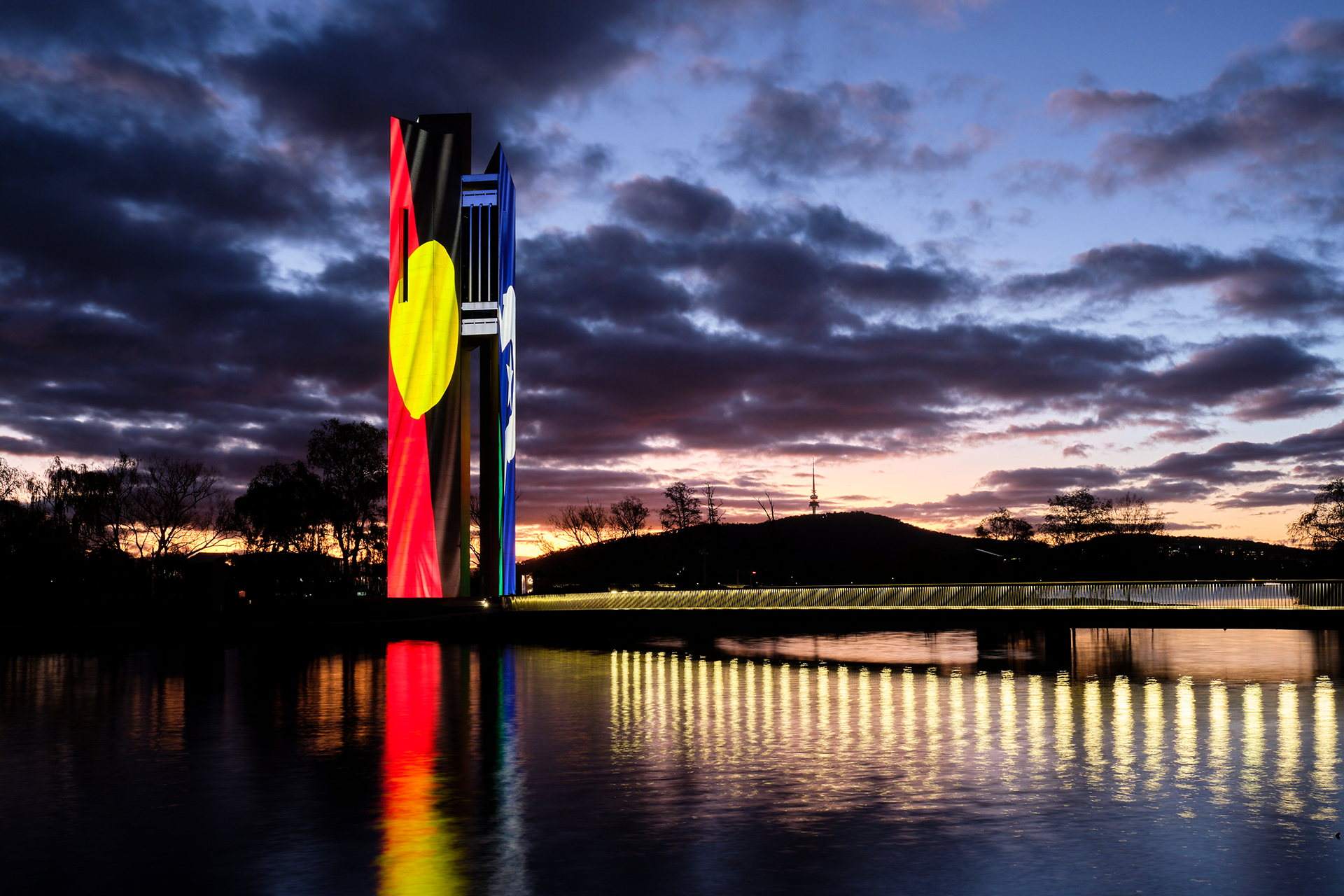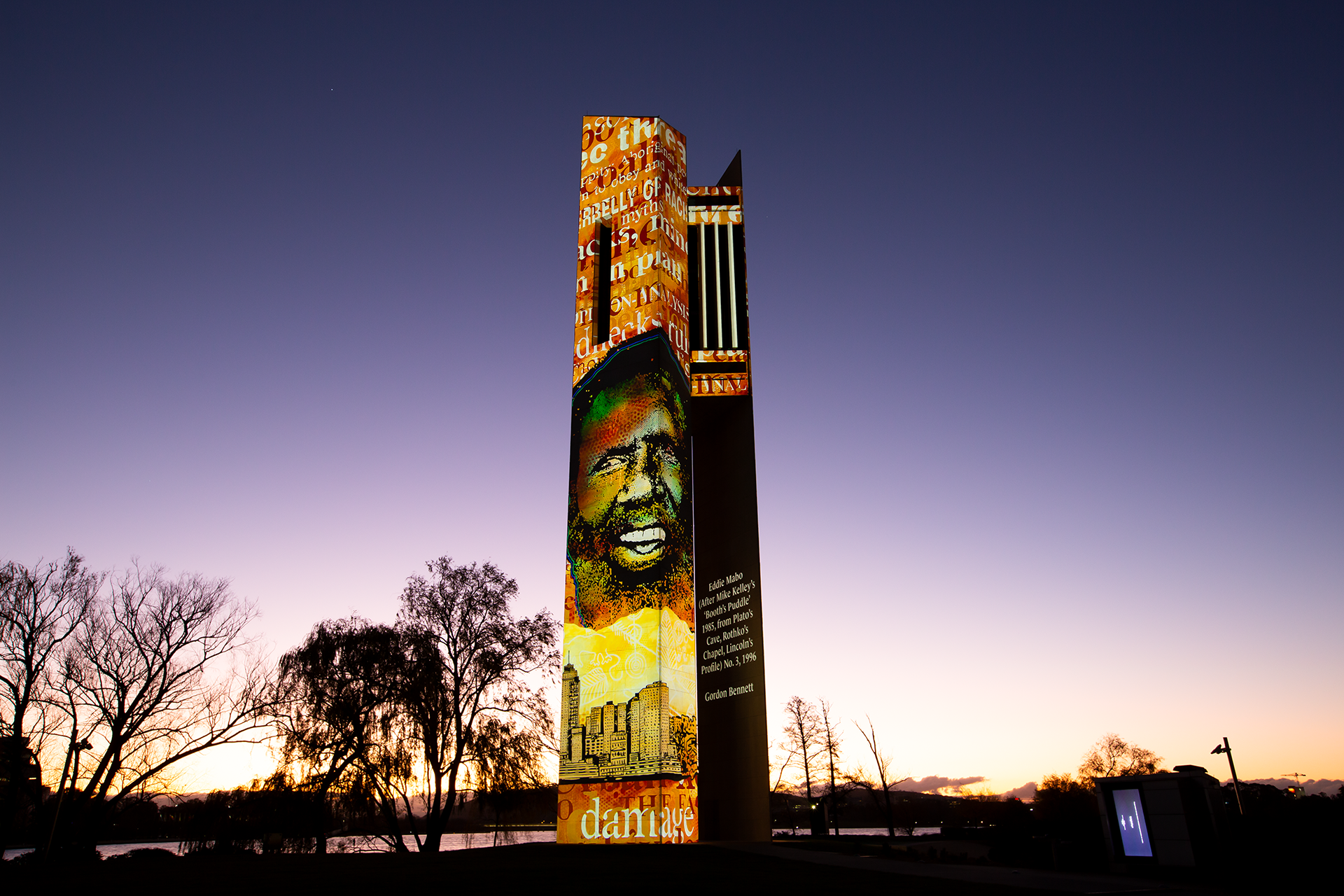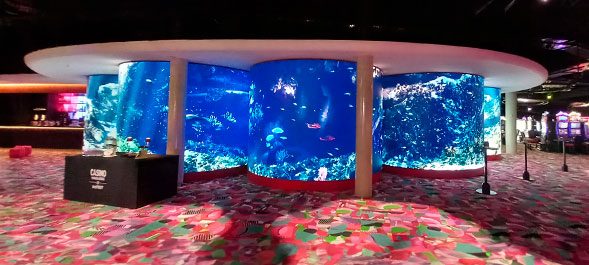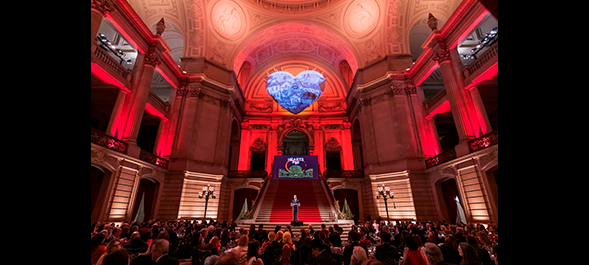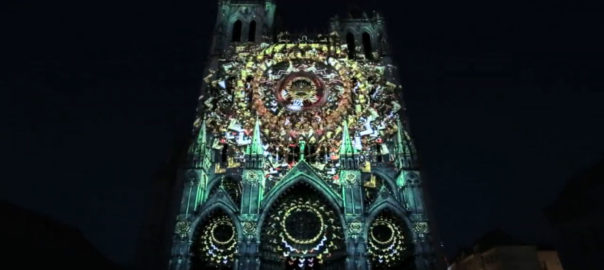Credit: The Electric Canvas
Contributors/Artists: Full list available under article
The Electric Canvas helps Australia observe National Reconciliation Week 2020 with Modulo Kinetic
Each year in Australia, National Reconciliation Week celebrates and builds on the respectful relationships shared by Aboriginal and Torres Strait Islander peoples and other Australians. In 2020, The Electric Canvas helped celebrate with projection mapping onto the National Carillon in Canberra using 12 x video-projectors and 3 x Modulo Kinetic media servers by Modulo Pi.
From 27 May to 3 June, Australia celebrated the Reconciliation Week, an ideal opportunity for all Australians to learn about their shared histories, cultures and achievements, and to explore how everyone can contribute to achieving reconciliation in their country.
On the occasion, The Electric Canvas (TEC) was approached to project onto the Carillon in Canberra over the eight nights of Reconciliation Week, with each night dedicated to a different Indigenous organisation or in observation of key dates. Over little more than two weeks, TEC’s creative department engaged with eight separate organisations, as well as Indigenous artists, in order to develop their pieces for projection.
The National Carillon is a 50m high musical instrument made of three triangular columns that are six metres wide on each facet.
The design process was further complicated by the need to consider viewing angles and distances that varied from 100m to over 850m, and from almost anywhere around the Parliamentary Triangle. Key messaging had to consider all the possible vantage points, and TEC had to educate the contributing artists and stakeholders on what the opportunities and limitations were with regard to the content.
The National Capital Authority had also taken a decision to open the island to limited numbers of people, so TEC also had to allow for very close proximity viewing. “This created an opportunity to present something more intimate, with a lot of detail, that could be seen close-up,” relates Peter Milne, TEC’s managing director. “The tower locations were chosen to provide a clean shot at an internal facet. This allowed us to project text and explanatory items on an internal facet that you couldn’t see from anywhere else.”
TEC set-up four projection towers, each home to three 25K Christie Crimson laser projectors running in portrait mode. Media was handled by 3 x Modulo Kinetic media server systems with full hot back up.
The National Capital Authority and all stakeholders were extremely happy and impressed with the brightness and clarity of the projection mapping.
Credits – Slide 1:
Title: Reconciliation, a continuing journey of growth and togetherness
Artist/Contributor: Artist: Nikita Ridgeway. Narrative created by: Reconciliation Australia
Description: To kick off National Reconciliation Week 2020, we highlight this year’s theme, ‘In This Together’. The artwork, by Nikita Ridgeway of Boss Lady Design and Communications, is titled, ‘Reconciliation, a continuing journey of growth and togetherness’. The artwork’s design elements represent Australians together on a national journey of reconciliation, while paying homage to the past and recognising the present.
Credits – Slide 2:
Title: 2000 Walks for Reconciliation – In this Together
Artist/Contributor: Image: Montage of various photographs by Glenn Campbell/Newspix, News Ltd/Newspix, Brian Condron/Newspix, Richard CisarWright/Newspix). Narrative created by Reconciliation Australia
Description: ‘2000 Walks for Reconciliation – In this Together’, is a montage of imagery from the 2000 Reconciliation Walks across Australia. The People’s Walk for Reconciliation (as the bridge walk was titled) had a profound impact on those who participated, and a roll-on effect around the country. Today’s date marks the 20th Anniversary of the first Reconciliation Walk.
Credits – Slide 3:
Title: Voice Treaty Truth
Artist/Contributor: Image: The 3 themes of the Uluru Statement from the Heart. Narrative created by: ACT Reconciliation Council
Description: ‘Voice Treaty Truth’ – The Uluru Statement from the Heart is an invitation from Aboriginal and Torres Strait Islander people to “walk with us in a movement of the Australian people for a better future”. It inspires this artwork.
Credits – Slide 4:
Title: Sea of Hands
Artist/Contributor: Artist: Australians for Native Title and Reconciliation (ANTaR). Narrative created by ANTaR, Senator Pat Dodson, Dr Jackie Huggins AM
Description: In 1997, not far from the Carillon on Federation Mall, thousands of Australians came together to plant a Sea of Hands in solidarity with First Nations peoples to stand up for their land rights. Over two decades later, our Hands in Reconciliation are still going, even digitally.
Credits – Slide 5:
Title: Galambany
Artist/Contributor: Artist: Richie Allan. Narrative created by the United Ngunnawal Elders Council & Winanggaay Language Group
Description: ‘Galambany’ The story of the Artwork is about Mother Earth gifting the 3 Rivers that flow in Canberra. Ngunnawal people breathed life into these rivers and the rivers gave life to the Ngunnawal people. This Artwork tells that story.
Credits – Slide 6:
Title: ACT Reconciliation Day
Artist/Contributor: Artist: Lynnice Church. Pledge content developed by ACT Reconciliation Council
Description: Canberran and Ngunnawal, Wiradjuri and Kamilaroi artist, Lynnice Church, created this artwork for the city’s Reconciliation Day. Lynnice’s artwork embodies the essence of reconciliation, equity and understanding. As well as showcasing Lynnice Church’s artwork on the Carillon, these projections incorporate Reconciliation pledges made by the Canberran community. All Canberrans were asked to make a pledge and demonstrate their support and commitment towards Reconciliation.
Credits – Slide 7:
Title: Trio of Flags
Artist/Contributor: Image: Montage of the Australian Flag, Aboriginal Flag, Torres Strait Island Flag. Narrative created by ACT Reconciliation Council
Description: ‘Trio of Flags’ – Flying the Aboriginal and Torres Strait Islander flags shows respect. We acknowledge First Nation peoples, build community partnerships and demonstrate our commitment towards reconciliation.
Credits: © Copyright Harold Thomas 1971. Aboriginal flag reproduced digitally with the permission of WAM Clothing.
Credits – Slide 8:
Title: Mabo Day
Artist/Contributor: Artist: Gordon Bennett with permission from the National Portrait Gallery and the Estate of Gordon Bennett and Gail Mabo.
Description: This artwork celebrates Mabo Day and was projected on the anniversary of the historic Mabo decision in 1992. On 3 June 1992 the High Court of Australia delivered its landmark Mabo decision, which legally recognised that Aboriginal and Torres Strait Islander peoples have a special relationship to the land.
Credit: Eddie Mabo (after Mike Kelley’s ‘Booth’s Puddle’ 1985, from Plato’s Cave, Rothko’s Chapel, Lincoln’s profile) No.3 1996 by Gordon Bennett. Collection: National Portrait Gallery, Australia. © Gordon Bennett Estate. With thanks for permission from The Gordon Bennet Estateand Gail Mabo.

